|
Circa 1996 - Mark Reynold, Landscape Architect Our third President was a veritable renaissance man, a genius who achieved noteworthiness at all her attempted. Farming, architecture, music, classical literature all captured his spirit at one time or another yet many Jefferson scholars concur that gardening was his strongest passion. He is also known as one of our country's first landscape architects. He read current books and philosophies on the trends, visited European landscapes and developed the grid system of land division for our continent. His home that he designed, Monticello, was a grand experiment, a place for Jefferson to apply his theories as he wished. Jefferson was born into the plantation life of rural colonial Virginia. Growing up, his father taught him the skills of surveying, map-making, and topography interpretation. Later he inherited surveying and drafting equipment that are still on display today at Monticello. In 1768, he chose the site for Monticello. It was on the Rivanna River, an estate of 2,650 acres, site of his previous home, Shadwell. Shadwell burned, and Jefferson did not regret it, for it had been of traditional colonial style, not to his taste. Highly critical of architecture, Jefferson felt the chief merit for architecture in Williamsburg was that it would burn easily. At Monticello he used classical instead of colonial design, but his most radical concept involved development of the land. In the words of Alexander Pope, he " consulted the genius of the place" to determine the natural advantages of the site. Most notably, the house was to be set on a mountaintop and utilize the grand view. This was a move forward toward the more philosophical and romantic styles currently in European vogue. It was a move away from symmetry and geometry that most Americans were still employing. In 1769 the mountaintop was leveled and trees were set out even before the house was started. In 1772 the "roundabouts" were begun. Another innovative idea, Jefferson designed a series of roads to circumnavigate the mountaintop solely to enjoy the woods and the view. In 1774, Jefferson layed out his vegetable garden on the south slope, with the orchard and vineyard on the terrace below. Jefferson used the orchard to organize the hillside and act as a natural transition to the woods below.
0 Comments
Circa 2001 Little creatures are invading your pristine garden. Some of the critters are helping maintain your favorite flowers and vegetables while some are there only to wreak havoc. Would you know the difference? Garden Pests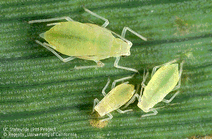 Aphids Tiny red, green or black aphids cluster on leaves and stems and suck their juices. They also carry virus and fungus diseases. 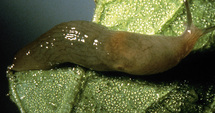 Slugs Slugs look like snails without shells. They'll attack the plants in your garden at night. Circa 2000 If you are a victim of allergies, then you know how annoying the runny nose, the red itchy eyes, the dry hacking cough, and the scratchy throat can be. With the coming of fall, ragweed, in particular, is a major allergy nightmare. But, there is some hope for allergy sufferers. The allergic reaction ( basically a misguided immune system response ) is an inflammatory reaction of your body to some foreign substance ( particularly pollen ), certain animal dander, dusts, or molds. when it affects the membranes lining the eyes or nose, it produces hay fever ( allergic rhinitis.) When it affects the bronchial tubes, it produces asthma. Wind-pollinated plants such as grasses, weeds, and trees that produce massive amounts of powdery, easily-inhaled pollen - with repeated exposure - produce some of the worst allergic reactions. Insect-pollinated flowers, vegetables, and even pine trees have such large and sticky pollen that they are not allergy problems. Circa 1998 From the ancient Egyptians' irrigation systems to modern suburban grassy lawns, gardens offer a historical timeline of cultures throughout the world spanning many centuries. The earliest written evidence of gardening is found in Egyptian tomb paintings from 2000 B.C. These pictures showed threes planted in straight rows along irrigation canals that fed small enclosed pools. Walled gardens existed throughout the Nile delta fed by canals that were joined to an irrigation system that encouraged farming. The ancient Persians of 1000 B.C are credited with the thought that the garden is the model of heaven. Their private paradises ( the word paradise comes from the Persian word pairidaeza meaning garden ) contained flowers, lush fruit trees, running water, and cool shade. It was during this time that King Nebuchadnezzar II built the Hanging Gardens of Babylon for his wife, Amytis. The gardens covered three acres of above ground terraces in downtown Babylon. Hollow pillars filled with soil supported tall trees, and water from the Euphrates was brought in by a sophisticated hydraulic system. This spectacular garden was named one of the Seven Wonders of the World.
Circa 1999 The crocus, one of the earliest flowers to bloom in the spring, was first raised as a spice plant. The spice was saffron, the pungent orange-yellow flavoring, which is actually the dried stigmas of one species of crocus. The name crocus comes from the ancient Greek name for saffron, which was krokos. More than, 4,000 years ago, the island of Crete was a center of saffron production, and saffron was sacred to the great goddess of Crete, Britomartis. More than 3,000 years ago the Egyptians were using saffron as a drug to treat rheumatism and dental trouble. The Greeks used saffron chiefly as a dye. Because of its high cost, it was used to color the robes of kings. To the Greeks saffron was so precious that their poets described the robes of the Greek gods as saffron-colored. Saffron is one of the costliest of all spices to produce. About 4,300 crocus blossoms must be gathered, and their stamens carefully removed and dried, to make one single ounce of the deep yellow-orange spice. And, each step must be done by hand. Like the Greeks, the ancient Irish considered saffron a royal color. The Hindus used it in religious ceremonies, and today saffron is one of the colors in the flag of India. |
AuthorsCurrent and former staff members have contributed to our newsletter over the years. Now the articles are available to view here on our blog Categories
All
|
© 2024 Ski Landscape Corporation - Website by Day Design


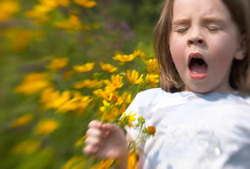
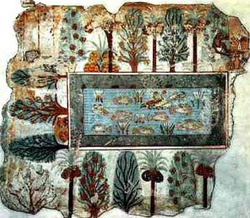

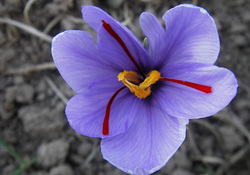
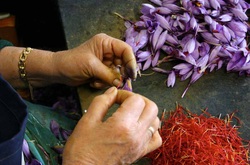
 RSS Feed
RSS Feed